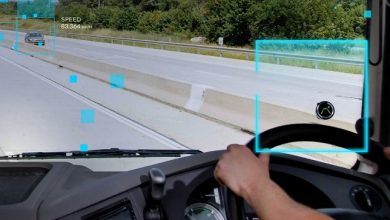Advanced Technology & Growth of the Automotive Industry to Drive the Global Telematics Market
The term ‘telematics’ is defined as a system used for remote communication between vehicle and vehicle (V2V) or vehicle and infrastructure (V2I) through a wireless network medium. Over the years, the increasing stringency of safety norms by several regulatory authorities has compelled automotive OEMs and Tier-1 companies to make considerable enhancements in the safety and security of vehicles as well as passengers.
The rising demand for raw vehicular data, enhanced comfort and entertainment features, stringent safety regulations, growing smartphone and vehicle integration, and the need for improved operational efficiency and profitability have resulted in the growth of the Telematics Market for on-highway & off-highway vehicles. The Telematics Market for on & off-highway vehicles is estimated to grow at a CAGR of 14.37% during the forecast period, to reach a market size of USD 40.84 billion by 2022.
With technological advancements in connectivity solutions for the automotive industry, the fast exchange of data will become a reality in the coming years. Several companies are collaborating to develop the 4G LTE and 5G technology to support the developments in the area of connected vehicle solutions. For instance, in May 2017, Continental AG (Germany) partnered with NTT DoCoMo, Inc. (Japan) to develop advanced 5G networks to enhance the cellular based vehicle-to-everything (V2X) technology. In 2016, LG Electronics (South Korea) partnered with Intel Corporation (U.S.) to develop the 5G telematics technology for vehicle communication. The emergence of advanced telematics solutions would require faster 4G LTE or 5G connectivity to provide reliable vehicle communication, which is expected to fuel the demand for the Telematics Market in the coming years.
With increased focus on passenger and vehicle safety, the safety and security regulations are continuously studied and updated by various governments. Some of these updated regulations will also mandate the embedded telematics solutions indirectly. For instance, the European Union (EU) has announced the eCall service mandate for all new passenger cars that will be produced after April 2018 in Europe. The Russian government mandated the emergency call service called ‘ERA-GLONASS’ for passenger cars in 2015. The eCall service requires an embedded telematics control unit, which can connect the car to the nearest emergency service provider automatically in case of a crash. While these regulations are initially proposed for passenger cars, they may also be implemented in light and heavy commercial vehicles in the near future.
With respect to vehicle type the telematics industry is divided into passenger cars, commercial vehicles, off-highway vehicles.
The passenger car OE telematics market is anticipated to grow to USD 33.69 billion by 2022 whereas telematics aftermarket for this vehicle segment would reach USD 3.64 billion during the same period. For instance, the European Union (EU) has mandated the implementation of e-Call services for all passenger cars from April 2018. These regulations have led to tremendous growth in telematics adoption rate for passenger cars segment with a wide offering of safety and leisure features including automatic crash notifications, vehicle tracking, vehicle health alerts, e-call services, navigation, roadside assistance, infotainment services, remote diagnostics, and so on. Leading global OEMs such as General Motors, Mercedes-Benz, BMW, Subaru, Audi, Toyota, Lexus, and Hyundai among others are now offering factory-fitted telematics systems in selected models.
Commercial vehicles plays an important Telematics system in fleet management in the segment. With the help of a wide range of services such as fuel management, vehicle tracking and monitoring, route optimization, vehicle health alerts, maintenance checks and reminders, etc., fleet owners can bring down the operational cost and improve business efficiency. Additionally, the Federal Motor Carrier Safety Administration (FMCSA) has implemented the final rule for the adoption and use of Electronic Logging Devices (ELDs) in three phases. This rule requires the adoption and use of compliance ELDs within 2 years from the date of publishing. However, it allows fleets and drivers to use devices that meet the current standards for Automatic On-Board Recording Devices (AOBRD) (49 CFR 395.15) until December 2019. There is a 2-year clause from the final deadline for the adoption of ELD. FMCSA estimates that 3 million vehicles and 3.4 million drivers fall under this ruling, which can be a major revenue contributor for telematics systems market.
Off-Highway Vehicles – Construction activities are expected to increase across the globe in the coming years owing to increased infrastructure spending, particularly by the governments of developing countries. Increasing investments in infrastructure result in higher demand for construction equipment. As per analysis, the global construction equipment rental market is projected to reach USD 103.6 billion by 2025, growing at a CAGR of 3.11% from 2018 to 2025. The use of telematics system in construction equipment helps to support asset management, location tracking, engine health monitoring, fuel management, maintenance & repair scheduling, and diagnostics among others. Increased equipment usage makes its regular maintenance vital. With the help of telematics, minimal maintenance at regular intervals can prevent expensive equipment breakdown, thereby saving time and cost.
Automotive Telematics Trends, ByServices is segmented into automatic crash notification (ACN), emergency calling, navigation & infotainment, on-road assistance, remote diagnostics, and vehicle tracking. Telematics offers a perfect combination of safety & security and convenience features. Features such as ACN, e-Call, on-road assistance, remote diagnostics, and vehicle tracking help to meet the increasing demand for safety & security. On the other hand, navigation and infotainment services enhance the convenience for the user.
You Can Request the PDF Brochure of this Study Here:-
https://www.marketsandmarkets.com/pdfdownload.asp?id=245073008
Navigation and infotainment leads the telematics services market for on-highway vehicles. The growth can be attributed to the increasing adoption of navigation and infotainment by automotive OEMs to attract consumers. Also, improvements in processing capabilities of the telematics control unit (TCU) have led to the inclusion of features such as an interactive voice-based command interface for accessing in-vehicle features. Premium car manufacturers are offering advanced driver safety and entertainment packages including 3D navigation services. The telematics service is offered in the premium segment vehicles initially as a free trial, which requires subscription renewal after completion of the trial period. The rising smartphone integration and rapid urbanization would make it easy for the user to access navigation and infotainment services. Thus, navigation and infotainment would become a basic need in the vehicles that makes life easy on a daily basis.
Another importance telematics service- remote diagnostics would grow at the fastest rate during the review period. The remote diagnostics service allows the users to proactively monitor the condition of the engine and other critical parts and sends a maintenance alert in advance, if required, to prevent a major breakdown. Additionally, predictive maintenance helps to check the vehicle operation and reliability to ensure smooth functioning and operational efficiency. Remote diagnostics also helps OEMs to diagnose a problem related to vehicle systems and try to fix it in the next version of the product. The need to minimize maintenance & repairing costs and achieve optimum operational output would drive the growth of remote diagnostics services
The North American region leads the telematics market with the US at the leading position in 2017. The factors that drive the North American market are the higher adoption rate of advanced technology, the presence of prominent OEMs such as General Motors & Ford, rising and exceptional network coverage, and increasing demand for premium vehicles equipped with advanced safety and comfort features. Alternatively, the North American market is driven by the presence of commercial vehicle manufacturers such as Daimler, Volvo, Paccar, Navistar, and Hino that provide standard telematics unit in most of their vehicle models. Increasing demand for cargo lifting capability, compatibility with multiple applications, increasing wear and tear of the engine & other components, and rising demand for comfort and safety by the user have prompted OEMs to provide pre-installed telematics units in the vehicle to improve the productivity and efficiency of the vehicle.
Key Players:- Robert Bosch GmbH (Germany), Continental AG (Germany), LG Electronics (South Korea), Verizon (U.S.), Harman International (U.S.), and Qualcomm Technologies, Inc. (U.S.).
Name: – AmeyAmanaji
Designation: Associate Manager, Automotive & Transportation
Bio:AmeyAmanaji is associated with MarketsandMarkets for more than 6 years, sharing his skills in the Market & Business Research in Automotive & Transportation domain. He has worked in projects related to emerging technologies for industry analysis, go-to-market strategy, growth strategy, competitive landscape, and industry valuation.
Name: Kavish Kumar Chourasia
Designation: Research Analyst, Automotive & Transportation
Bio: KavishChourasia is associated with MarketsandMarkets with more than 2 years in automotive & transportation domain with overall 3 and half years of research experience. He has worked on study topics including automotive advanced technologies, agricultural & marine equipment, engine and exhaust, and materials & component related markets




